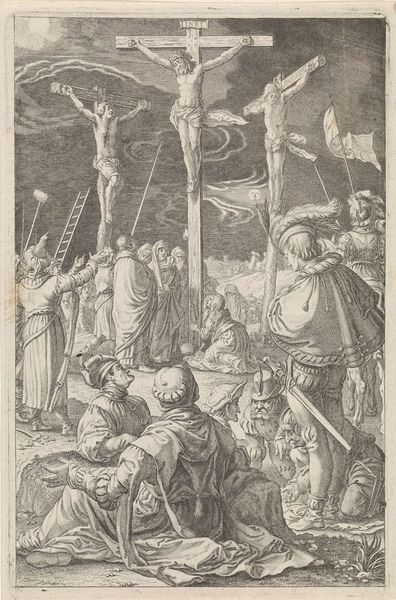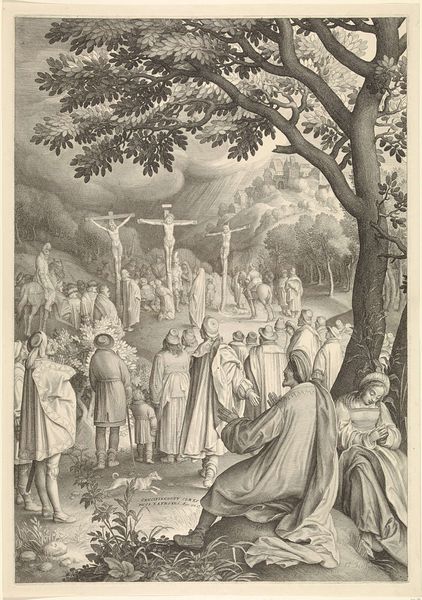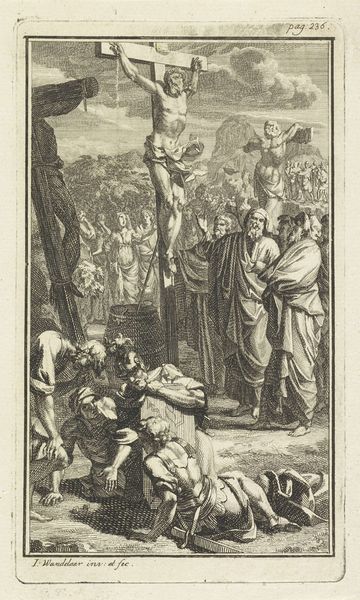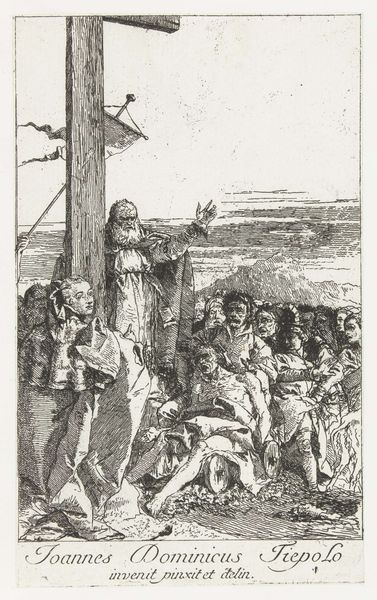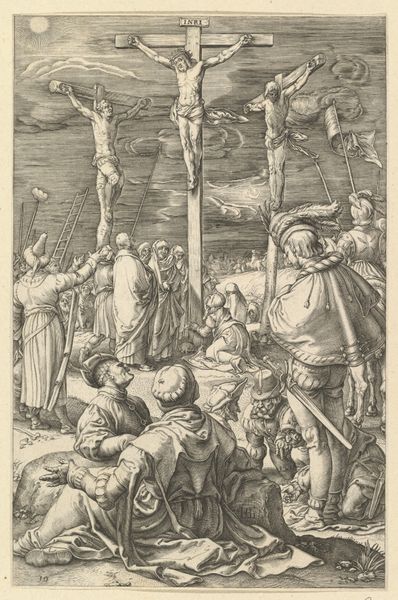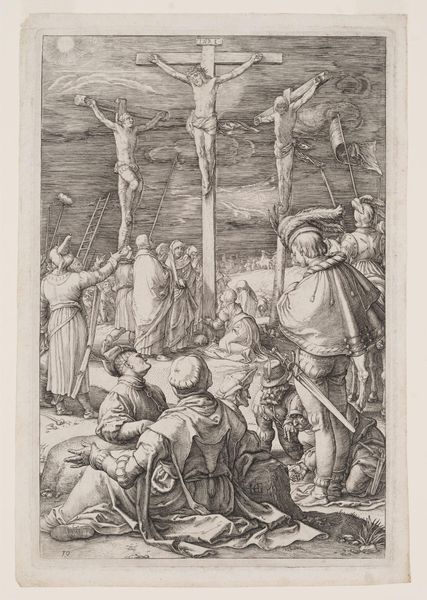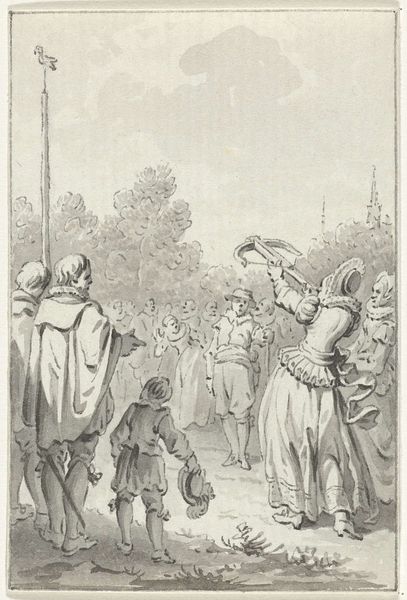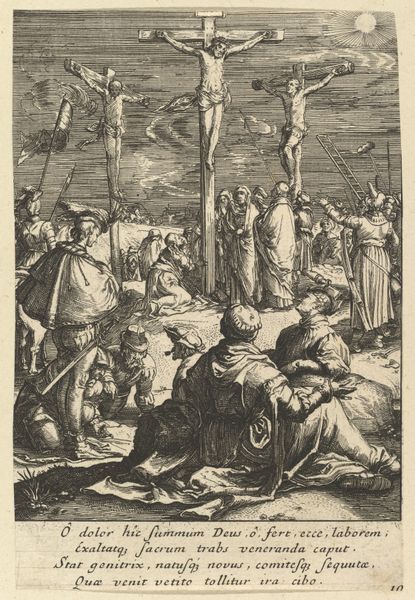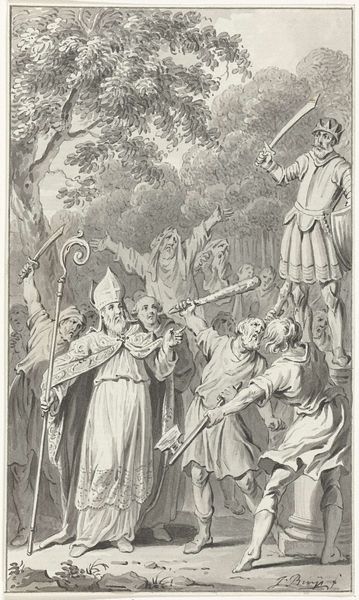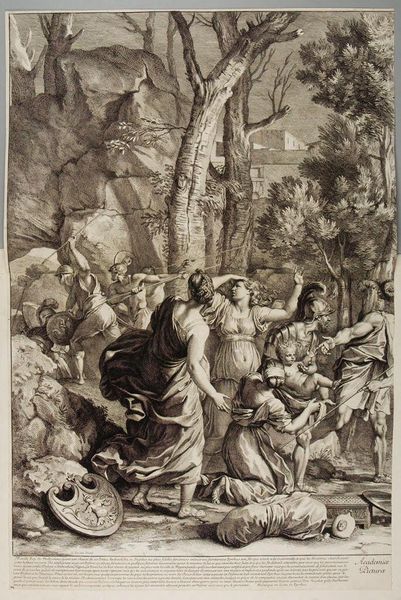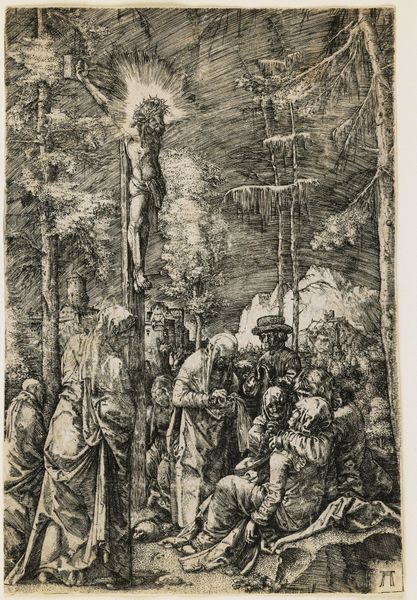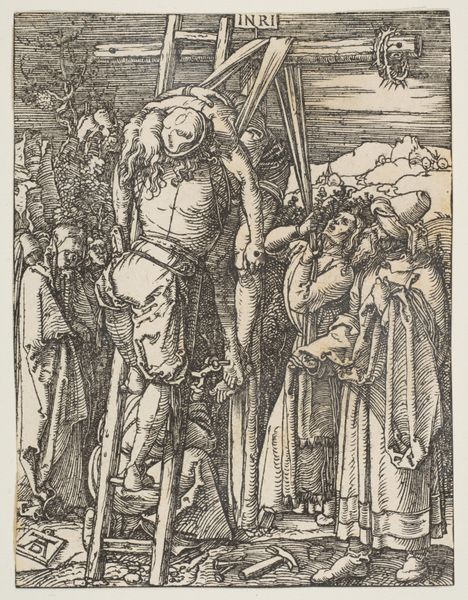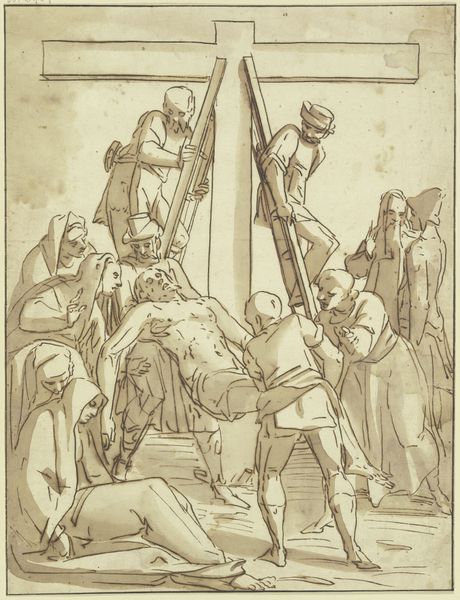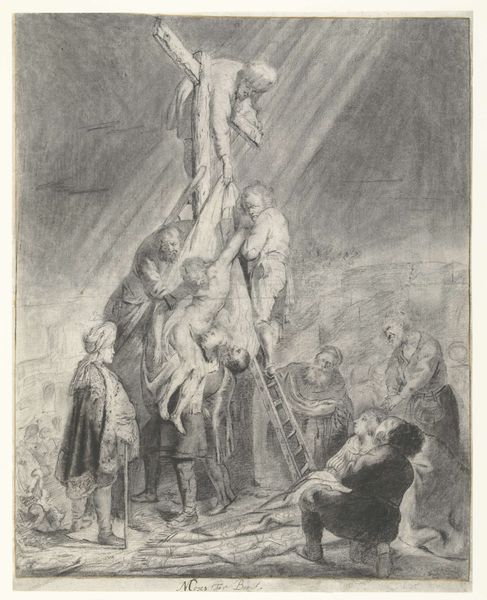
print, engraving
#
narrative-art
#
baroque
# print
#
figuration
#
history-painting
#
engraving
Dimensions: height 199 mm, width 137 mm
Copyright: Rijks Museum: Open Domain
Editor: So, here we have Nicolaes de Bruyn's "Crucifixion of Christ" from 1618, an engraving currently held at the Rijksmuseum. There's such meticulous detail in the crowd scenes. What particularly strikes me is how de Bruyn captures all of these different figures from commoners to elites; it feels like it's making a statement about society at that time. How do you see it? Curator: I see a print, not just as an image, but as a commodity embedded in a complex social and economic fabric. Engravings like this were products, made through the labor of skilled artisans and intended for consumption. Consider the material: copperplate, ink, paper. Each component involved trade networks, resource extraction, and specific forms of craftsmanship. Editor: So you're looking at this as evidence of a commercial network and less of a… religious depiction? Curator: The religious aspect certainly plays a role, as it was created with religious institutions being the dominant patrons. It fed a market hungry for easily accessible, reproducible imagery of important scenes like the crucifixion. Who was buying these prints? How were they being used and distributed? Understanding this provides a valuable insight into both the religious and the material culture of the period. Editor: That’s a good point! How accessible would this have been to different levels of society? Was this aimed at a bourgeois market, or something more widespread? Curator: Prints allowed for a far wider circulation of images compared to unique paintings. Still, even relatively affordable prints required a degree of purchasing power and literacy to fully appreciate them. The level of detail suggests it was a high-end print sold for wealthy individuals. Editor: I see...I never really considered that the method of creation could affect how it could be accessed in society. Curator: Absolutely. Thinking about the social context of its creation and distribution gives a new depth of meaning, one that is rooted in the materiality of the artwork itself. Editor: It definitely challenges how I’ll approach other prints, thinking about the copper, the printing press, the market... Thanks!
Comments
No comments
Be the first to comment and join the conversation on the ultimate creative platform.
